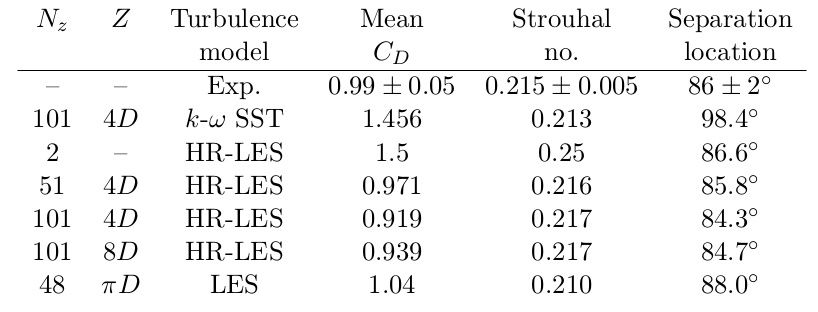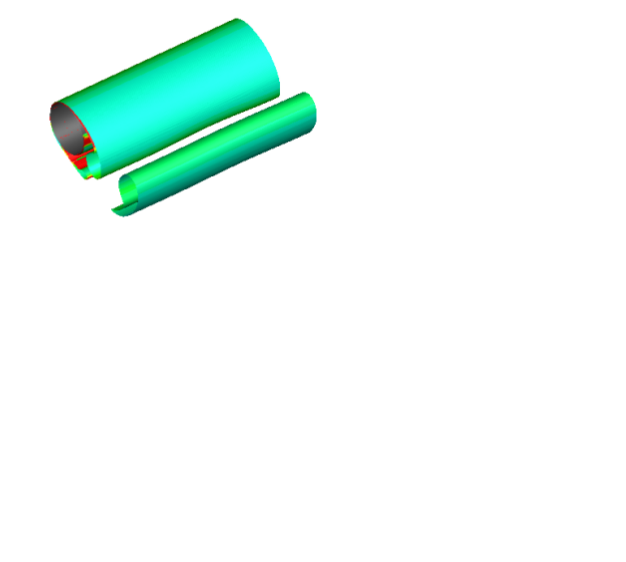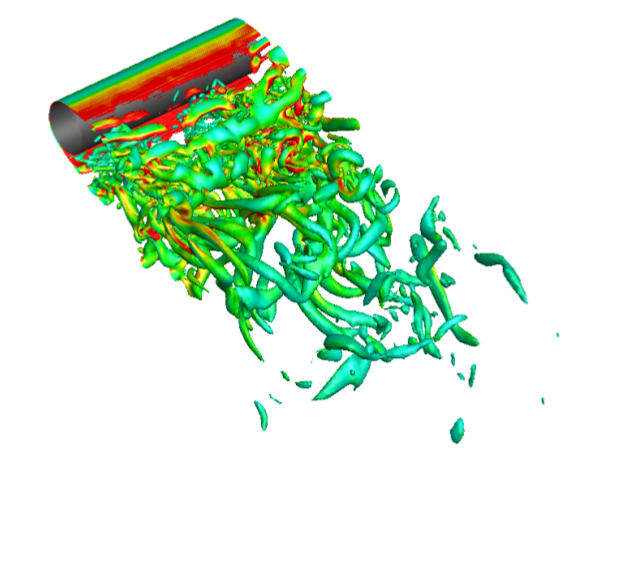 |
||||||||
 |
 |
 |
 |
|||||
 |
||||||||
 |
||||||||
 |
 |
|||||||
 |
||||||||
 |
||||||||
 |
||||||||
 |
||||||||
 |
||||||||
Simulation about a 3D cylinder using HRLES
In order to visualize more clearly the differences between RANS modeling and LES / HRLES, a direct comparison is presented in this section [1]. The flow about a three-dimensional cylinder was computed using both the k − ω SST (RANS) model and an advanced Hybrid RANS/LES model, developed at Georgia Tech by Dr. Sánchez-Rocha and Dr. Menon [2]. Instantaneous flow fields are shown in Fig. 1↓ and some simulation results are presented in table 2↓. The Q-criterion is defined such that it is only positive near vortices. This property can therefore be used to filter out the regions of high vorticity (boundary layers, vortices, etc).

Figure 2
Predicted circular cylinder characteristics for various turbulence methods and grids with number of spanwise planes Nz, and spanwise extent Z. Separation location is given in degrees of azimuth from the leading edge stagnation point. Experimental Strouhal number is from L. Ong (1996), and separation location is from J. Son (1969) at ReD = 5000. LES data is from A. Kravchenko (2000). Source: Lynch (2011) [1]
References
[1] C.E. Lynch. Advanced CFD methods for wind turbine analysis. PhD thesis, Georgia Institute of Technology, 2011.
[2] M. Sánchez-Rocha and S. Menon. The compressible hybrid RANS/LES formulation using an additive operator. Journal of Computational Physics, 228(6):2037--2062, 2009.

